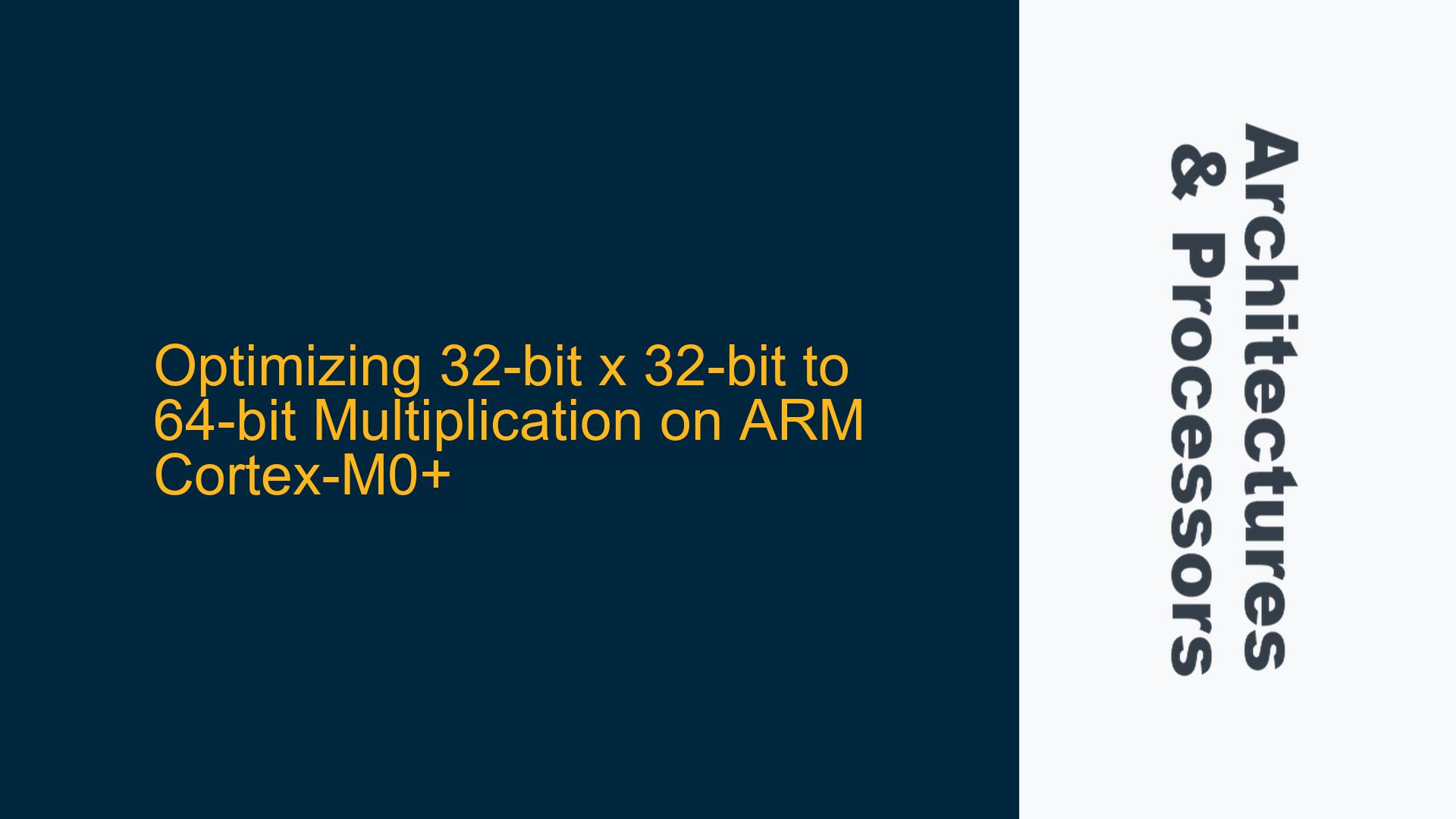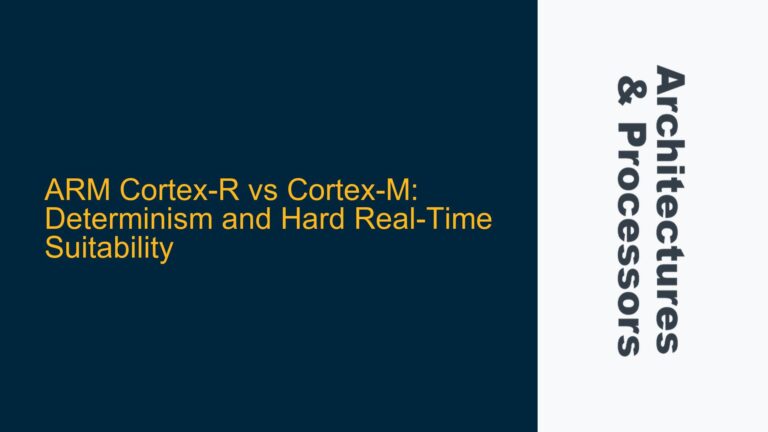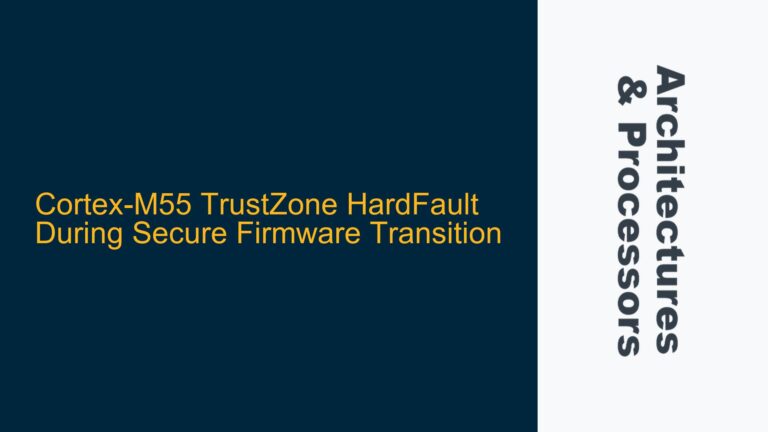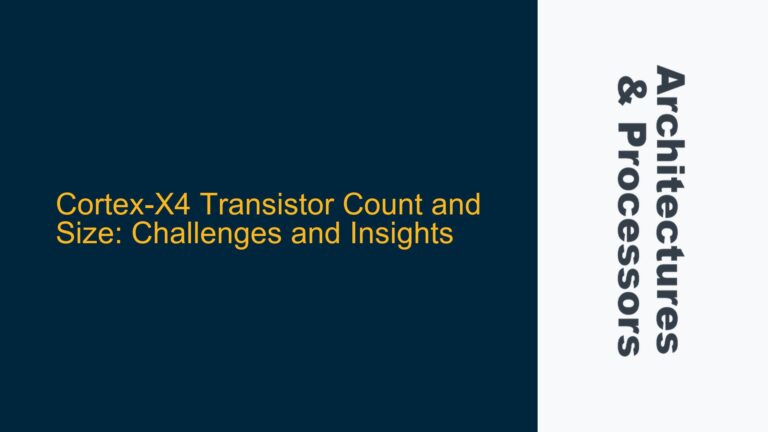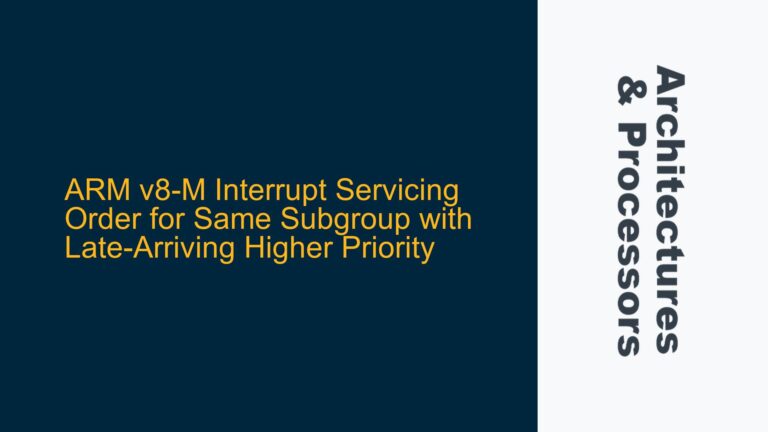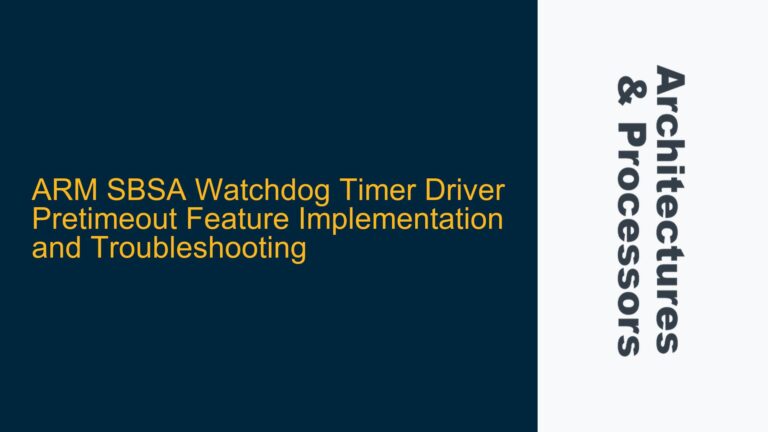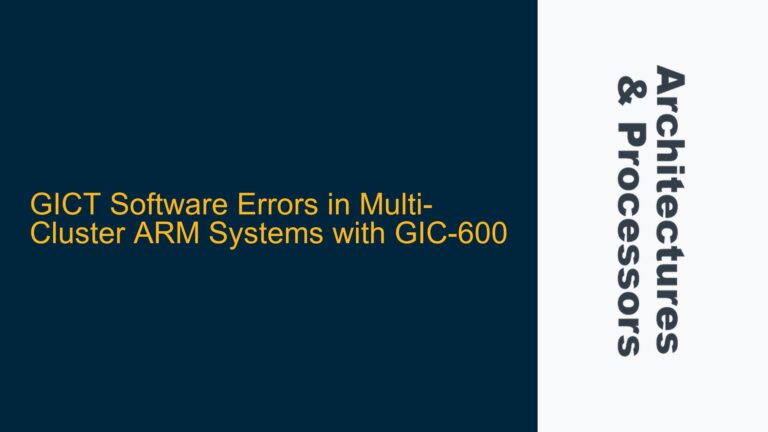ARM Cortex-M0+ 32-bit Multiplication Performance and Register Handling
The ARM Cortex-M0+ is a highly efficient, low-power processor designed for embedded applications. One of its limitations, however, is the lack of a native 32-bit x 32-bit to 64-bit multiplication instruction. This necessitates the use of multiple 16-bit multiplications and careful handling of intermediate results to achieve the desired 64-bit product. The primary challenge lies in optimizing the sequence of operations to minimize cycle count while ensuring correct handling of register dependencies and carry propagation.
The discussion revolves around a code fragment that performs a 32-bit x 32-bit multiplication, producing a 64-bit result. The initial implementation takes 18 cycles, with a subsequent optimization reducing this to 17 cycles. The core issue is the efficient handling of partial products, carry propagation, and register usage to avoid unnecessary stalls or data corruption. The Cortex-M0+ architecture, with its limited register set and single-cycle 16-bit multiplication, presents unique challenges for such operations.
The key bottleneck in the current implementation is the handling of the carry flag (C) during the accumulation of partial products. The carry must be propagated correctly to ensure the accuracy of the 64-bit result. Additionally, the order of operations and register usage must be carefully managed to avoid overwriting intermediate results prematurely. The discussion highlights a bug where the order of multiplication instructions leads to the destruction of a register value, underscoring the importance of meticulous instruction sequencing.
Register Dependency and Carry Propagation Challenges
The primary cause of inefficiency in the 32-bit x 32-bit multiplication routine is the handling of register dependencies and carry propagation. The Cortex-M0+ architecture has a limited number of general-purpose registers (R0-R7), and efficient use of these registers is critical to minimizing cycle count. The multiplication routine involves multiple partial products, each of which must be computed and accumulated without overwriting intermediate results.
The initial implementation uses a sequence of MULS (multiply) and ADDS/ADCS (add with carry) instructions to compute the partial products and accumulate the results. However, the order of these instructions can lead to register dependencies that stall the pipeline or, worse, corrupt intermediate results. For example, the instruction MULS R0, R3 followed by MULS R3, R2 results in the destruction of the value in R3 before it can be used in subsequent operations. This highlights the need for careful instruction sequencing to avoid such pitfalls.
Another critical issue is the handling of the carry flag during the accumulation of partial products. The carry flag must be propagated correctly to ensure the accuracy of the 64-bit result. The current implementation uses a combination of ADCS (add with carry) and LSLS/LSRS (logical shift) instructions to handle the carry, but this adds additional cycles to the routine. The challenge is to find a more efficient way to propagate the carry without increasing the cycle count.
The Cortex-M0+ architecture also lacks certain instructions that could simplify the multiplication routine. For example, there is no native instruction to directly extract the upper or lower 16 bits of a 32-bit register, necessitating the use of UXTH (unsigned extend halfword) and LSRS (logical shift right) instructions. These instructions add to the cycle count and complicate the overall routine.
Optimized Instruction Sequencing and Carry Handling
To address the issues of register dependency and carry propagation, the multiplication routine must be carefully optimized. The first step is to reorder the instructions to avoid overwriting intermediate results. For example, the sequence MULS R3, R2 followed by MULS R0, R3 should be replaced with MULS R0, R3 followed by MULS R3, R2. This ensures that the value in R3 is not destroyed before it can be used in subsequent operations.
The next step is to optimize the handling of the carry flag. Instead of using a combination of ADCS and LSLS/LSRS instructions, the carry can be handled more efficiently by using the ADC (add with carry) instruction in combination with logical shifts. For example, the following sequence can be used to accumulate the partial products and propagate the carry:
ADDS R1, R2 // Add partial product to result
ADCS R0, R3 // Add partial product with carry
This sequence ensures that the carry is propagated correctly without adding unnecessary cycles to the routine. Additionally, the use of UXTH and LSRS instructions can be minimized by carefully selecting the order of operations. For example, the upper and lower 16 bits of the 32-bit operands can be extracted early in the routine and stored in separate registers to avoid repeated extraction.
Finally, the overall cycle count can be reduced by unrolling the loop and eliminating redundant instructions. For example, the following optimized routine achieves the 64-bit result in 16 cycles:
MUL32x32:
UXTH R2, R0 // Extract Factor 0 lo [0-15]
LSRS R0, R0, #16 // Extract Factor 0 hi [16-31]
LSRS R3, R1, #16 // Extract Factor 1 hi [16-31]
UXTH R1, R1 // Extract Factor 1 lo [0-15]
MOVS R4, R1 // Copy Factor 1 lo [0-15]
MULS R1, R2 // Factor 1 lo x Factor 0 lo
MULS R4, R0 // Factor 1 lo x Factor 0 hi
MULS R0, R3 // Factor 0 hi x Factor 1 hi
MULS R3, R2 // Factor 1 hi x Factor 0 lo
LSLS R2, R4, #16 // (Factor 1 lo x Factor 0 hi) << 16
LSRS R4, R4, #16 // (Factor 1 lo x Factor 0 hi) >> 16
ADDS R1, R2 // (Factor 1 lo x Factor 0 lo) + ((Factor 1 lo x Factor 0 hi) << 16)
ADCS R0, R4 // (Factor 0 hi x Factor 1 hi) + ((Factor 1 lo x Factor 0 hi) >> 16)
LSLS R2, R3, #16 // (Factor 1 hi x Factor 0 lo) << 16
LSRS R3, R3, #16 // (Factor 1 hi x Factor 0 lo) >> 16
ADDS R1, R2 // (Factor 1 lo x Factor 0 lo) + ((Factor 1 hi x Factor 0 lo) << 16)
ADCS R0, R3 // (Factor 0 hi x Factor 1 hi) + ((Factor 1 hi x Factor 0 lo) >> 16)
This optimized routine reduces the cycle count to 16 by carefully reordering the instructions and minimizing the use of UXTH and LSRS instructions. The carry is propagated efficiently using the ADCS instruction, and the overall sequence is free from register dependencies that could stall the pipeline or corrupt intermediate results.
In conclusion, the key to optimizing 32-bit x 32-bit to 64-bit multiplication on the ARM Cortex-M0+ lies in careful instruction sequencing, efficient handling of the carry flag, and minimizing the use of redundant instructions. By following these principles, it is possible to achieve a highly efficient multiplication routine that meets the performance requirements of embedded applications.
